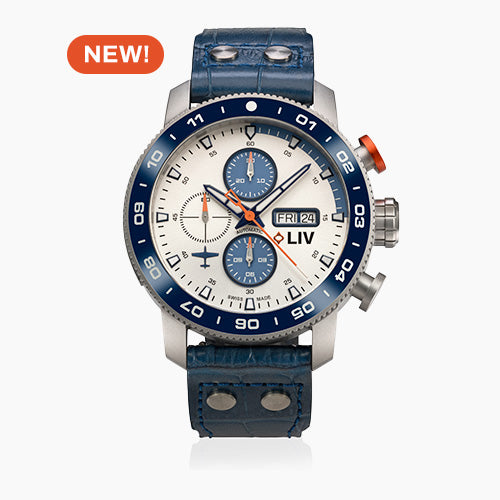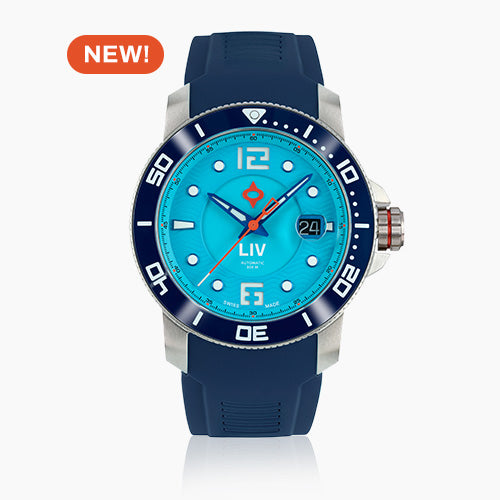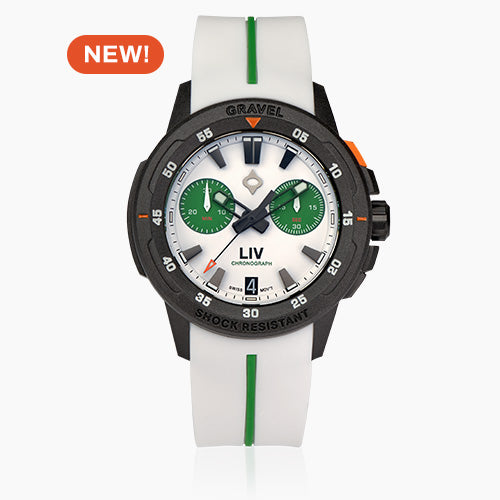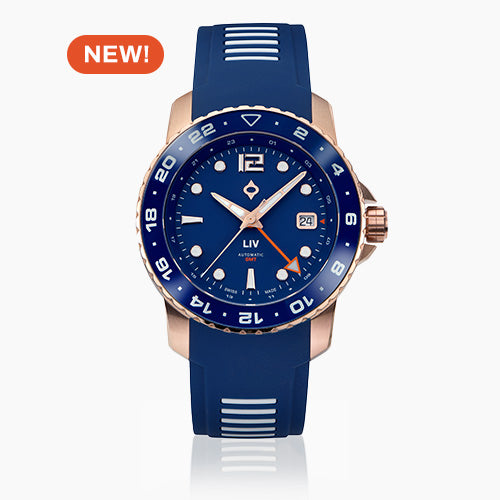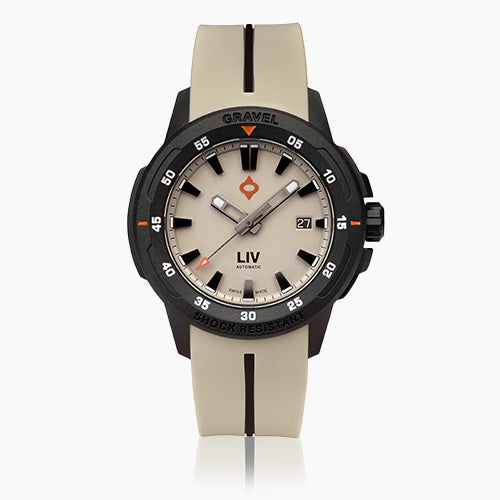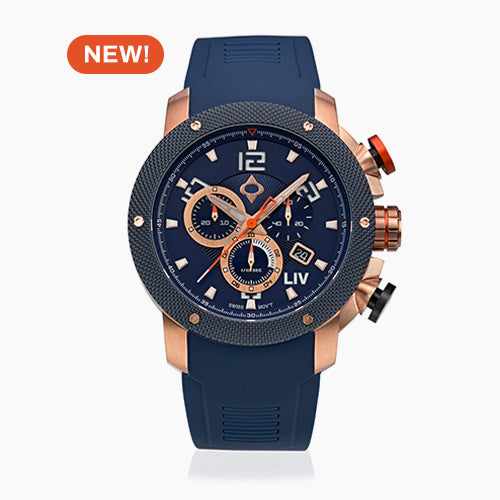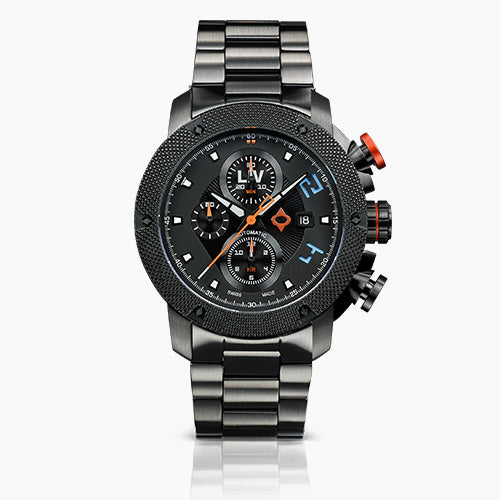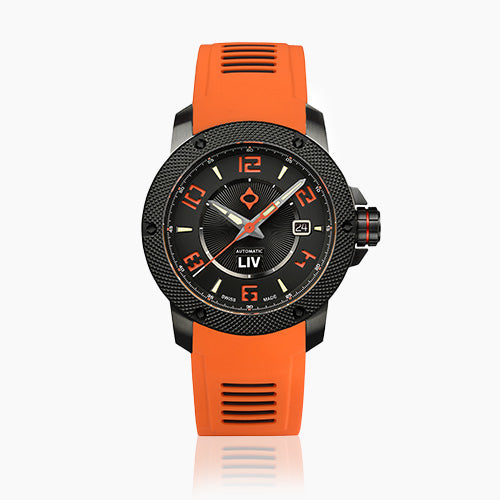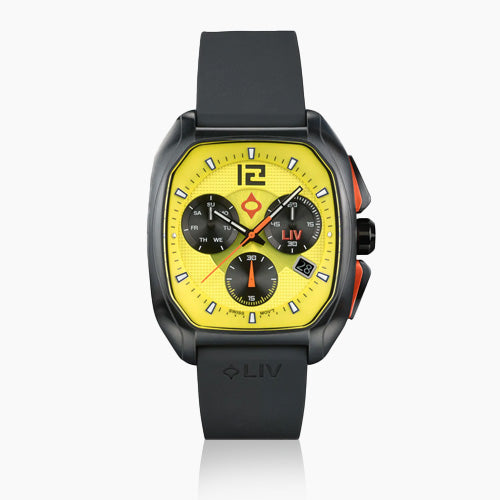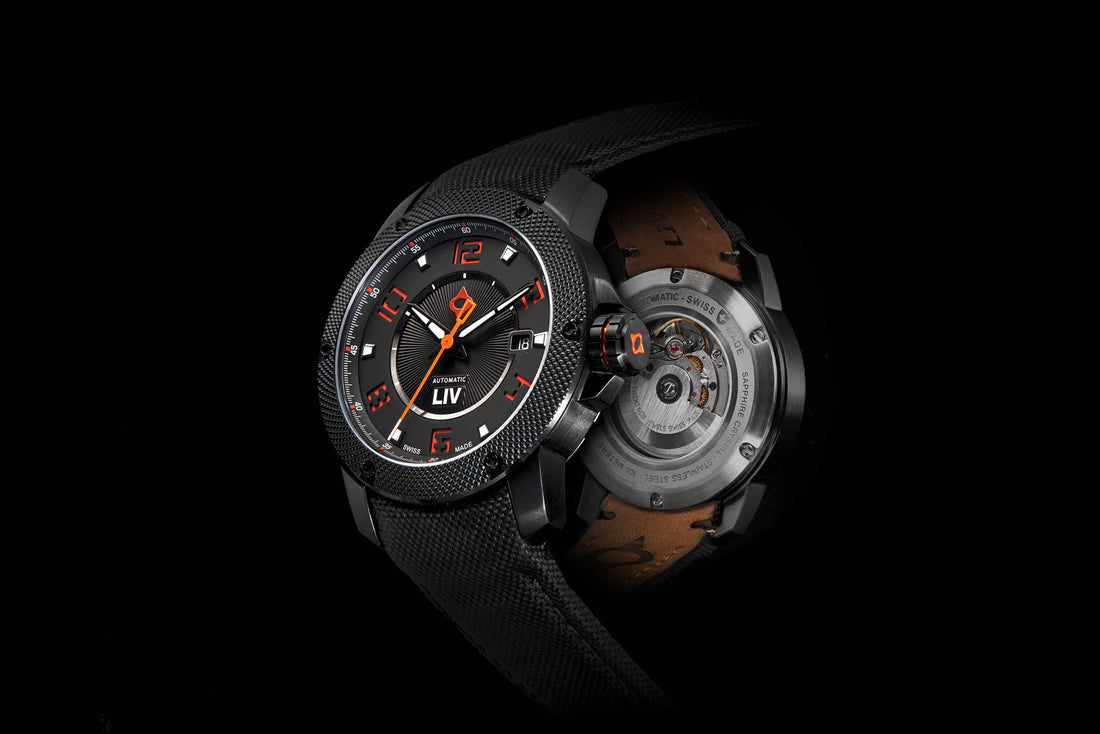
The 5 Most Accurate Watch Movements of All Time
Share

THESE MOVEMENTS ARE THE BEST OF THE BEST
Let it be said: there are few things more beautifully engineered than a mechanical watch movement. Little wonder that watch lovers obsess so much about movements. We here at LIV Watches share in that obsession, as can be seen in our article discussing our belief in Swiss-made Sellita movements.
Another obsession for many horologists and watch lovers is that of the accuracy and precision of a watch. That too resides in the quality of its movement. We too share in that obsession with our fellow watch lovers, having analyzed the factors that determine what makes a watch movement accurate and reliable, which you can read about here.
Not all timepieces are as accurate as people presume and a watch lover know that nearly every watch loses at least a few seconds a day. But there are those mechanical movements that are astoundingly accurate. This article will take a look at five such movements that deserve mention.
WHAT MAKES A MOVEMENT ACCURATE?
Some might think that obsessing about the accuracy and precision of a watch may be rather redundant. After all, isn’t being accurate and precise in keeping time the entire point of any timepiece? Strictly speaking, not really. Mechanical watch movements lose time. It is the extent to which they lose time that differentiates great movements from the merely good.
ACCURACY AND PRECISION ARE NOT THE SAME THING
However, before we continue, it is worth noting that accuracy and precision are not interchangeable terms. Accuracy is the measurement of deviation from a given reference or target. The less deviation from its reference point, the more accurate something is. So, a watch that loses less than a second a day is more accurate in timekeeping than a watch that loses three seconds a day.
Precision, on the other hand, is variation averaged over time. The less variance there is, the more precise something is. Therefore, a watch that loses four seconds every day may not be accurate, but it is still precise in the amount of time it loses.
Therefore, accuracy does not require precision or vice-versa. A mechanical movement must strive for both, of course. A person not only wants a timepiece that is accurate, but also one that does so consistently every day, i.e. precisely.
THE COSC STANDARD FOR MECHANICAL WATCH ACCURACY
This article will concentrate on accuracy of mechanical movements, although the presumption will be that precision is also an embedded feature. What makes a mechanical movement accurate is not a linear equation or straightforward assumption. The very word ‘accuracy’ will have different meanings for different people.
Determining watch accuracy is tricky. However, a good rule of thumb regarding accuracy is that provided by the Official Swiss Chronometer Testing Institute, or Contrôle Officiel Suisse des Chronomètres (COSC). After all, the word ‘chronometer’ refers to accuracy in timekeeping. In order to achieve a chronometer certification from the COSC, a mechanical watch must be in the ‘+6/-4’ range, meaning it should not gain more than six seconds or lose more than 4 seconds per day. The COSC also bases its certification on precision, which is derived from the average daily rate on the first 10 days of testing.
FACTORS THAT DETERMINE MECHANICAL MOVEMENT ACCURACY
Whilst accuracy in mechanical movements is not always an exact science, there are some determining factors, which can include:
Manufacturer grades: The specs published by movement makers such as Sellita and ETA can offer guidance as to a movement’s accuracy. These two-biggest Swiss movement makers both have ‘grades’ for their movements which are entirely based on accuracy. For example, Sellita has four grades:
- Chronometer (which must of course meet the ‘+6/-4 seconds per day’ COSC certification standard);
- Premium;
- Special (elaboré); and
- Standard.
User habits: the way a mechanical watch is worn will also determine its accuracy. This is the opinion of expert watchmaker, Alkis Kotsopoulos, of New York’s Swiss Watch Repair Co., who states he will ask a client about how they intend to wear the watch, how often, what level of physical activity they will engage in while wearing the watch, how the client will store the watch when not work, and so forth. Those factors will greatly influence accuracy, according to Kotospoulos.
The balance spring: the balance spring as we know it today dates back to 1795, and regulates the oscillations of the balance due to its elasticity. This important mechanism within the movement is also made to different grades with an emphasis on precision, which in turn determine the accuracy of a movement.
Let us turn to five of the most accurate movements ever.
MOVEMENT #1: ZENITH DEFY
Zenith, now owned by luxury conglomerate LVMH, has been a watchmaker based in Le Locle, in the heart of Switzerland’s watchmaking industry, since 1865. It released its Defy Lab model in September 2017, boldly proclaiming it to be the most accurate mechanical watch in the world.
The most innovative aspect of this movement is that it did away with 30-odd components that comprise the balance spring. It replaced it with a new single-piece oscillator made of monocrystalline silicon. This means the movement beats at a very high 15Hz (or 108,000 vibrations per hour, or vph). The silicon oscillator creates a far more precise oscillation back and forth, than that of a typical balance spring. Not only does the movement have less components, it is also 10 times thinner at a mere 0.5 mm (0.019 inches).
The Zenith Defy Lab movement also features a 60-hour power reserve, which is a more than 10% increase over Zenith’s other well-known mechanical movement, the iconic El Primero, released in 1969. The Defy Lab also has a frequency rate that is three times more than the El Primero, making the Defy Lab 10 times more accurate. Other features of the Defy Lab include:
- a precision rate of just 0.3 seconds per day, far exceeding the ‘+6/-4 seconds per day’ standards for COSC chronometer certification;
- maintaining precision for 95% of its power reserve;
- the movement has no need for lubrication; and
- ultra-high resistance to heat, cold, gravity, and magnetic fields, all of which impact accuracy.

Zenith Defy Lab
MOVEMENT #2: CALIBRE 360 CONCEPT CHRONOGRAPH
TAG Heuer, founded in 1860 and based today in La Chaux-de-Fonds, remains one of the leading Swiss luxury watchmakers. The watchmaker has been particularly notable for its innovative production of chronographs, which are essentially stopwatches. It’s not surprising that this noted chronograph maker has featured strongly in Formula 1 for decades, as well as in international skiing, both sports where accurate, precision timing is essential.
The Swiss watchmaker released its Calibre 360 Concept Chronograph to much acclaim at BaselWorld in April 2005. The prime distinction of this TAG Heuer movement was that it was the first mechanical wrist chronograph to measure and display time to 1/100th of a second. The movement is able to achieve this with the exceptionally high frequency of its balance wheel. It oscillates at 360,000 beats per hour, which was 10 times faster than any other chronograph at the time. That was a beat considered impossible until then!
TAG Heuer based this unique and complex movement on its earlier innovation, the Chronomatic Calibre 11, which was released in 1969. The Calibre 360 movement is beautiful in its complexity, comprising more than 234 components, in what are actually two connected yet distinctive mechanical movements that operate independently. Other features of this exquisite chronograph movement include:
- a complete standalone chronograph movement, with its own separate barrel, manual winding system, gearwheel, balance wheel, and spiral mechanism;
- a single crown that winds both movements - a clockwise rotation loads the manual chronograph movement, while a counter-clockwise rotation rewinds the automatic movement for the time;
- a 42-hour power reserve;
- a single-pallet escapement wheel and special balance wheel, which provides an oscillating frequency of 360,000 vibrations per hour, or vph, which was an enormous leap from the usual 28,800 or 36,000 vph for chronographs; and
- high resistance to shock and other wear effects.
MOVEMENT #3: TAG-HEUER MIKROGIRDER
Seven years after the release of its Caliber 360 Concept Chronograph, TAG-Heuer did it again: this time it was at the 2012 edition of BaselWorld and the movement was the Mikrogirder. This mechanical watch / chronograph could do timing to 1/2000th of a second.
How did TAG Heuer achieve this latest feat of mechanical movement wizardry? It had to do with the balance wheel and spiral-shaped hairspring, known as the Huygens principle and named after the Dutch scientist and ‘father’ of horology, Christiaan Huygens. This balance wheel system has been used in watchmaking for centuries but always had its limits. These limitations of the traditional Huygens system include sensitivity to magnetization and thermal conditions. It was also virtually impossible to ever reach a frequency higher than 500 Hz. A further limitation was something important to all chronograph lovers - accuracy.
The Mikrogirder movement used a completely new regulator system, which works with a linear oscillator that vibrates at a much smaller angle of a typical mechanical movement. It allowed the movement’s frequency to be better modulated without overburdening the power supply. The result was a movement with far greater precision and, in this instance, accuracy too.
Other interesting features of the Mikrogirder include:
- It operates at 1,000 Hz, or 7,200,000 beats per hour, which is 250 times faster than the average watch;
- A dual frequency system that uses two independent chains, which allows the watch to function with an improved power reserve, as well as automatic winding; and
- wear and tear in the movement should be significantly reduced, since the movement operates on an “on demand” basis, which means its is not constantly engaged.

TAG-Heuer Mikrogirder
MOVEMENT #4: SEIKO SPRING DRIVE MECHANICAL MOVEMENT WITH QUARTZ
Seiko, the Japanese watchmaking giant that first started business in Tokyo in 1881, was at the vanguard of the momentous quartz movement breakthrough in 1969. It soon became a giant in the watch world, thanks mostly to its cheaper and more accurate quartz movements. However, the Japanese company has also innovated with mechanical movements, including the world’s first automatic quartz, which combined both automatic and quartz technologies. This would culminate with its Spring Drive Mechanical Movement with Quartz Regulation, first released in 2004.
The Spring Drive movement uses a main spring and barrel like any other mechanical movement. It is the mechanical escapement that is different. Seiko replaced that with what it calls its ‘Tri-synchro Regulator’. It regulates the unwinding of the mainspring and controls the speed of the glide wheel with speed corrections courtesy of a quartz reference signal. Instantly, the movement is no longer susceptible to factors such as the position that it is worn in or gravity, both of which can create accuracy issues with traditional automatic movements.
Does this use of quartz energy in this Seiko movement mean that this is not a ‘true’ mechanical movement? We think not, given that the movement fundamentally works like a mechanical movement and looks like one.
The most innovative features of Seiko’s Spring Drive Mechanical Movement with Quartz Regulation include:
- a unique combination of three different types of energy (mechanical, electrical, and electromagnetic) that work in conjunction to power and regulate the movement;
- a 72-hour power reserve, which is a 30% gain over regular mechanical movements; and
- an aesthetically pleasing ‘gliding’ seconds hand typical of a mechanical timepiece.

Spring Drive Mechanical Movement with Quartz Regulation
MOVEMENT #5: MARINE CHRONOMETERS
Okay, we may cheat a little with our #5 choice in that it doesn’t list a specific mechanical movement but, rather, a class of mechanical movements. But it is a class of mechanical movements that was so innovative and so important for so long that we believe it deserves to be listed here. We refer to the mechanical watch movements used in marine chronometers.
Why do we say this? Any ship needs to know its latitude, longitude, and altitude in order to know its exact position on Earth, which is itself the epitome of accuracy. Modern GPS technology does that exceptionally well. However, GPS is only a very recent technological advancement available to shipping. As such, before GPS, ships had to position their routes based exclusively on complex calculations using the sun, stars, and planets in the sky - and precise time.
The main problem was accurately determining longitude out at sea. John Harrison, a Yorkshire carpenter, was the first person to devise a clock that was able to do this when he presented his marine chronometer in 1730. It worked by having a pair of counter-oscillating weighted beams connected by springs. This meant the movement wouldn’t be negatively influenced by gravity or the motion of a ship.
Today, marine chronometers are considered the most accurate portable mechanical clocks ever made. They achieve a precision of around a 0.1 second loss per day. Importantly, this equates to an accuracy that can locate a ship's position within just 1–2 miles (2–3 km) after a month at sea.
Ultimately, it is true that marine chronometers have more to do with precision than they do with accuracy of time. Certainly, all five of our mechanical movements featured in this article included high levels of precision, as well as accuracy.
Perhaps in the world of high-quality mechanical movements there is little difference between the two.

Vintage marine chronometer
About the Author

Esti Chazanow, Co-Founder at LIV Watches
Esti's passion for men's watches led her to co-found LIV Watches—a microbrand dedicated to connecting watch collectors with high quality, limited edition, Swiss Made timepieces at prices they can afford—and the rest is horological history.
